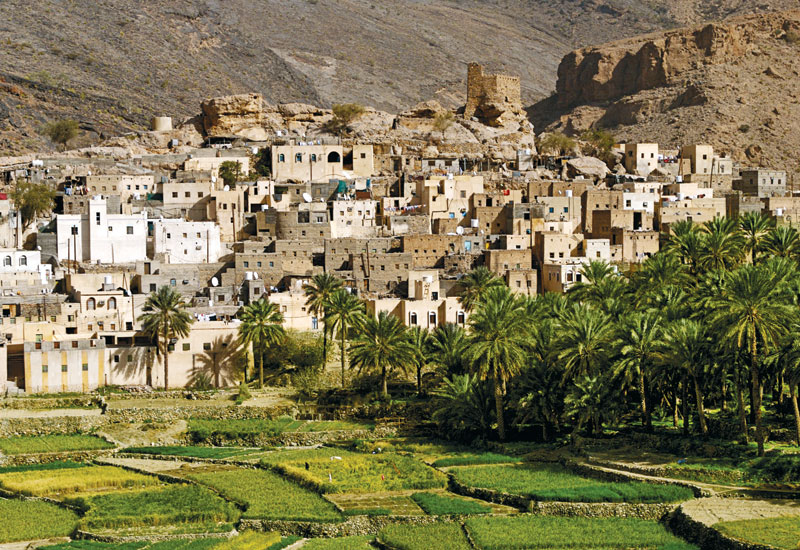Lee Jamieson explores the emergence of Oman as a sophisticated tourist destination with strong brand values that set it apart in the Middle East
Oman is busy rebranding itself. Less than 25 years ago, it was a non-welcoming country with little interest in tourism. Today, Oman has proved itself to be a sophisticated tourist destination with strong visibility — and it is fast attracting the attention of big-name international hotel brands.
Last year the Oman Brand Management Unit launched a new “tourist friendly” national logo for the country, dropping the traditional Omani dagger. Brand Oman was officially born in January 2009 and prides itself on promoting “the essence of Arabia” by focusing on the county’s rich cultural heritage.
With resilience in the face of economic downturn, liberalisation of its foreign direct investment policies, and heavy investment into its tourism development, including a US $3 billion expansion of its airport infrastructure, Oman has never been so attractive to hotel developers, owners and operators.

Advertisement
A brand is born
With diminishing oil and gas resources, Oman has been diversifying its economy through the development of its tourism industry. This year marks the halfway point for His Majesty Sultan Qaboos’ Vision 2020, which outlines the strategic direction for Oman’s travel and tourism industry.
A key development in this plan was the creation of a new Ministry of Tourism in 2004. Alongside developing Oman as a high quality destination, the Ministry also deployed representatives into its European source markets with measurable success. For example, Euromonitor International reports that arrivals from the UK have experienced a compound annual growth rate of 45% since 2003.
“According to the World Travel and Tourism Council, Oman’s tourism sector is one of the fastest growing in the world,” says Rotana chief operating officer Imad Elias. “The growth rate is attributed to an increase in lodging capacity and efforts made to market the sultanate as a tourist destination, which presents lots of opportunities for a management company like Rotana.”
Oman’s strategic and financial commitment to its tourism industry has created an attractive business environment for hotel developers, owners and operators.
“There has been a definite increase in tourism in Oman over the last few years, which has had a positive impact on the hotel industry,” says InterContinental Hotels Group vice president for development Phil Kasselis. “This year the country is on course for an 11% increase in tourists, taking it past the two million mark as Gulf residents look for an alternative holiday destination in the region.
“Against the backdrop of the country’s strong economic performance, travel and tourism has now emerged as one of the main pillars of the Omani economy. This creates a strong foundation for investors and the financial institutions backing those investors.”
However, hoteliers should be mindful that Oman’s emergence as a tourist destination is not yet complete and could be prone to growing pains. “While Oman is an attractive leisure destination it is not yet equipped to deal with large scale tourism and events,” explains Mövenpick Hotels and Resorts senior vice president in the Middle East, Andreas Mattmuller.
“It is therefore important for developers and owners to ensure that their product fits the market.”
The Omani government has also adopted a cautious approach towards mass tourism and has focused its efforts on fostering growth within specific sectors and niches. Arguably, this has enabled distinct brand identities to emerge across the industry.
Luxury brands
Oman’s priority was to foster growth at the high end of the luxury rating, enabling it to reap the financial benefits of tourism while minimising its impact upon local resources. Its reputation for high-end hospitality experiences continues to attract luxury and boutique brands. For example, Rotana has recently secured the new management contract for the five-star Salalah Rotana Resort, a 400-room property opening in early 2012.
A Hotel Missoni, Rezidor’s latest boutique offering, is also planned for Oman. This designer brand has been developed in co-operation with the iconic Italian fashion house Missoni and will open as a 250-key property on a self-sufficient resort 30 kilometres from Muscat in 2012.
As you would expect in the current economic climate, work has slowed on many high-end developments.
Worst hit was the Blue City, Oman’s landmark tourism development project, which had its US $400 million bonds downgraded by Moody’s in Q4 of 2008. Despite its financial woes, the developer has confirmed that the first phase of the 34 square kilometre project is on schedule and will be delivered later this year. Phase one will deliver the first of its 16 hotels: a boutique property operated by Anantara.









 Search our database of more than 2,700 industry companies
Search our database of more than 2,700 industry companies










Feb 16, 2010 , Oman
On what basis to you state that Blue City is the worst hit?